

It doesn’t take a genius to figure out that a local band can tell you more about the ins and outs of a city than TripAdvisor users ever could. The members of east LA band Chicano Batman hail from all over the sprawling city, from Rialto to San Dimas to Santa Fe Springs. LA food writer and author Javier Cabral met up with them to talk about how the snake-like, woven freeways of LA brought strangers together to become friends, and which local haunts contributed to that friendship becoming a band.
Collages by Mike Gallegos

How do you distill the essence of the bicultural Los Angeles experience? All the reasons why this city is beloved by the millions who proudly call this city their home? All the quinceañeras, all the backyard parties, all the car shows, and all the tacos? You can start by listening to Chicano Batman, the genre-defying band formed in the barrios of the city that has grown to be perhaps the most quintessential and original musical experience to come out of the region of the last decade.
Few bands immediately demand your full attention as soon as you hear the name like Chicano Batman and even fewer bands can keep your attention once you hear their music. From soul to funk to psychedelic to progressive rock to indie and then back to soul but this time in Español, since this band formed in 2008, their rise to become what some have dubbed “LA’s House Band” has been a feat to admire. No matter what kind of music you’re into, chances are that you will find a beat from their vast repertoire of melodies that will stick with you.
Chicano Batman’s earlier bilingual anthems like Itotiani with references to Aztec pyramids and the iconic Mexican candy, mazapán, earned the band a loyal following among LA’s identity-seeking Latinx community early on. Their latest album Invisible People, released during the quarantine in May, displays just how much the band has grown musically and emotionally.
“With this new record, the whole idea was to change the vibe,” says Bardo Martinez, who plays lead vocals, keyboard, and guitar for the band. “We’re Chicano Batman...but we’re not just for Chicanos,” he told me when I spoke to him. In this new album, you’ll be able to hear right away that the band worked with Shawn Everett, a GRAMMY-award winning mixing engineer known for his work with Alabama Shakes and Julian Casablancas.
As much as the band grows. Martinez assures that the band still represents where they are from: LA and the miles upon miles of sprawl between where the band members grew up in and currently reside – from Rialto to San Dimas to Santa Fe Springs. With half the band (Martinez and drummer, Gabriel Villa) having roots in Colombia, this means there will always be plenty of afro rhythm influences. And with the rest of the band, Eduardo Arenas (bass, guitar), Carlos Arévalo (guitar, keyboards) with roots firmly in Mexico, you can bet that however their music may evolve, you will still most likely be able to dance to it.
Nonetheless, their muse continues to be the city that brought Martinez, Villa, Arévalo, and Arenas and their respective walks of life together and form the basis of their pivotal band. I checked in with Chicano Batman to find out the spots that are part of the Chicano Batman experience.

Legg Lake at Whittier Narrows Park
“This open space is so essential to this area. I came here every Easter growing up and to the carnival that would set up here for all the rides. A lot of raza and people who live in apartments come here and stretch out. Open spaces like Whittier Narrow Park are the lungs of the city. One time, I camped out here when they would throw a bunch of trout in the lake for their annual fishing derby. Although I never caught any fish, it was a fun experience.” – Eduardo Arenas
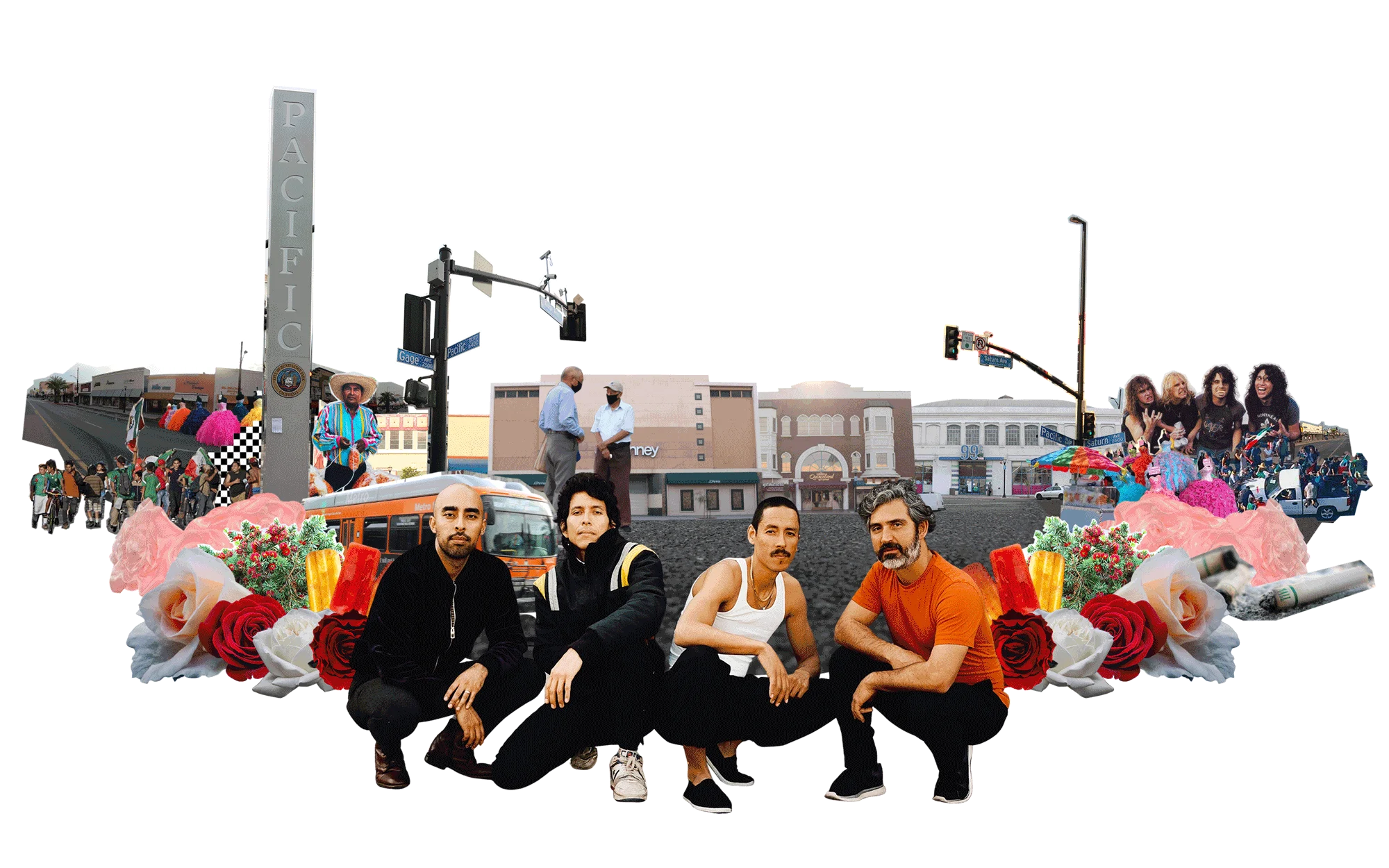
Pacific Boulevard (Huntington Park)
“Pacific Boulevard is notorious for being the place in LA where people go and demonstrate after any Mexico win in a big soccer game. It’s also where you go buy your dress for a quinceañera. This is the kind of LA that I’m down with. There are nightclubs. There are fake IDs, CDs, paletas, and ceviches within a few blocks of each other. I love that it is walkable here. People think we don’t walk here in LA but we do, especially in these Latino communities. They’ve had the model that a lot of people who are moving here with money are trying to redesign, but instead of redesigning...they’re just kicking out the people who have lived here and raise the rents. Churro spots become cafés. HP has also housed a lot of music from metal to ska.” – Eduardo Arenas
Pacific Boulevard is notorious for being the place in LA where people go and demonstrate after any Mexico win in a big soccer game
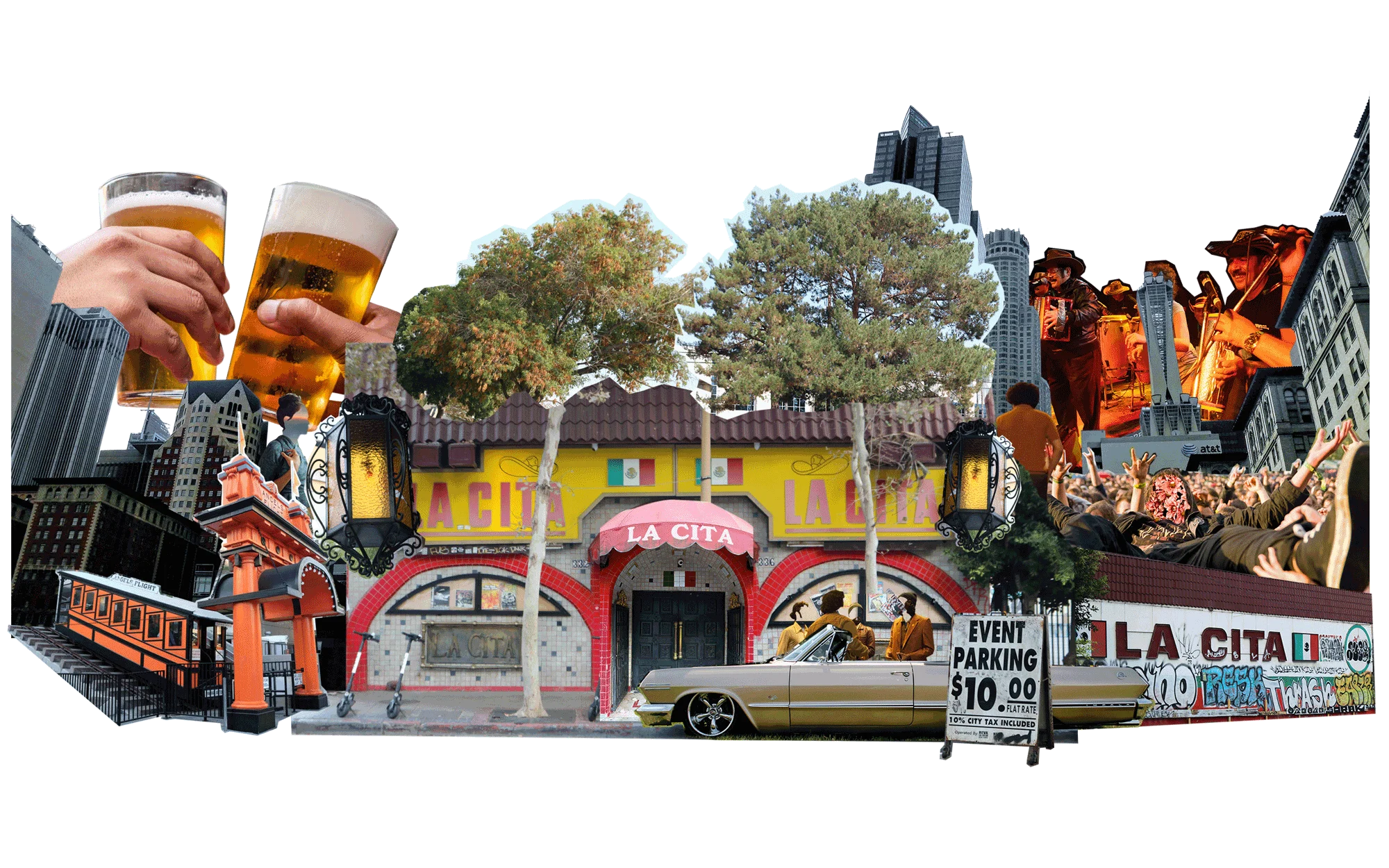
La Cita (DTLA)
“When you go to La Cita, you feel a real cantina vibe. You meet people. You listen to music. And you just have a good time. It’s timeless. Once you step in, you don’t know if it’s the 1970s and or ‘90s. It reminds me of going to a bar in Colombia, where I’m from. I made a connection to LA by coming here as soon as I moved here. It’s historic and in the heart of the city. You listen to roots music like reggae or cumbia and the patio outside makes it feel nostalgic and welcoming at the same time. This is the bar I imagine when you hear your tios tell you stories about bars they used to go to. The band has performed here at least seven times and we filmed our music video for Cycles of Existential Rhyme there. It was a hot, loud, and fun time. Lots of crowd surfing and lots of great memories.” – Gabriel Villa

Azuza Canyons
“The desire to reconnect with nature is what brought me here. When I came to the US, my family was from Azuza; my wife grew up there. This is something I do on the weekends and it reminded me of going to the mountains and rivers in Colombia. You bring your sandwiches and enjoy them by the river with the clean, fresh water coming down from the mountain. I remember having really great times with Bardo during our Buyepongo era. I take my friends, my family, and my dogs here.” – Gabriel Villa
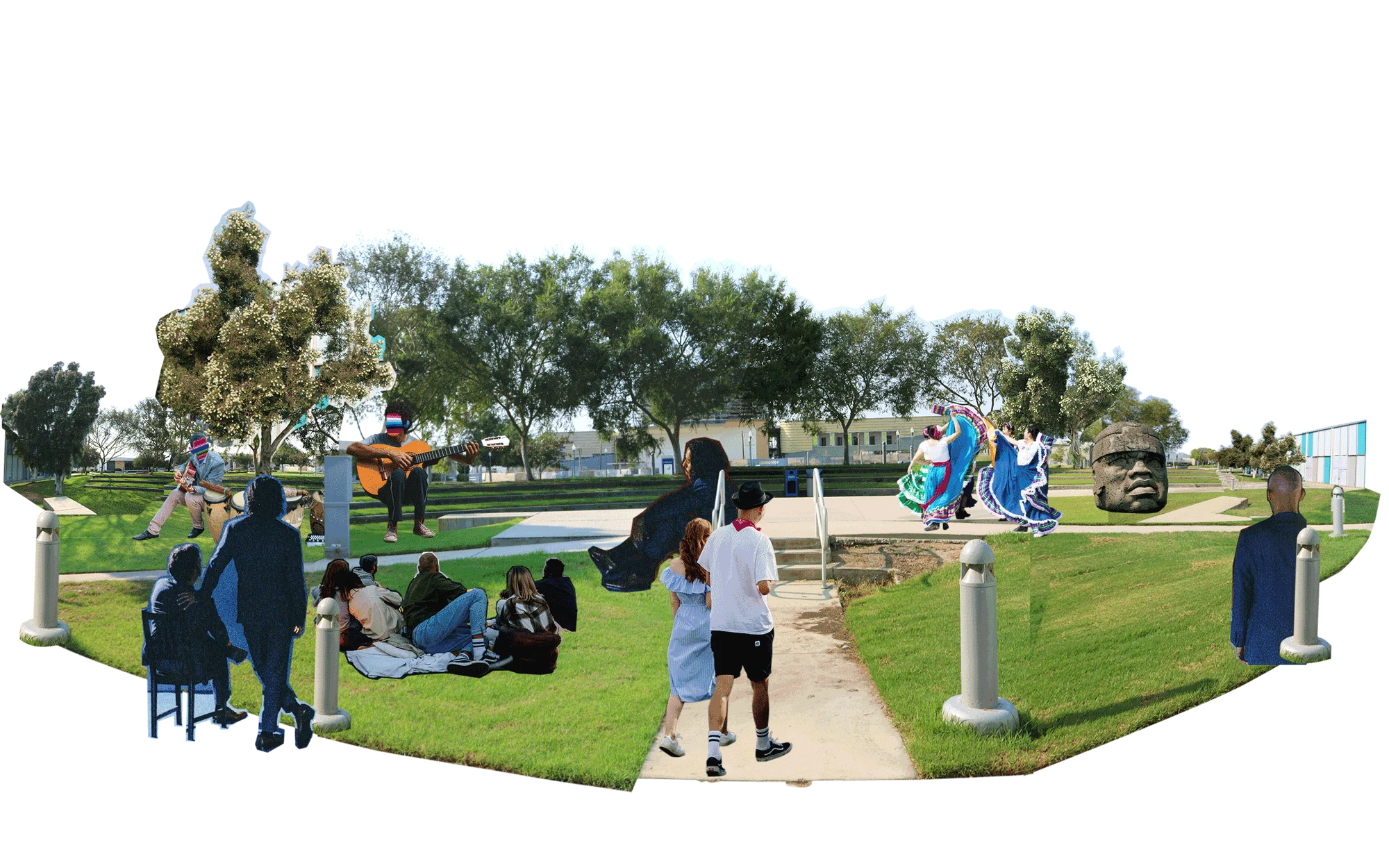
“The Hill” at Cerritos College (in front of the music department)
“I went to Cerritos College after graduating from high school. It’s an amazing little hill in front of the music department inside of the campus. It was a place where a lot of people and musicians would just congregate, talk, and play music. I was one of those kids who always had an acoustic guitar. College for me was breaking out of my shell – free from all the ‘cool kid’ politics of high school. It was like breaking out of an oyster for me because I could be whoever I want. I remember singing one of our songs that made it to our repertoire called Stoned Soul Picnic. I remember singing it there with friends as if it was 1967. It was such a vibe.” – Bardo Martinez
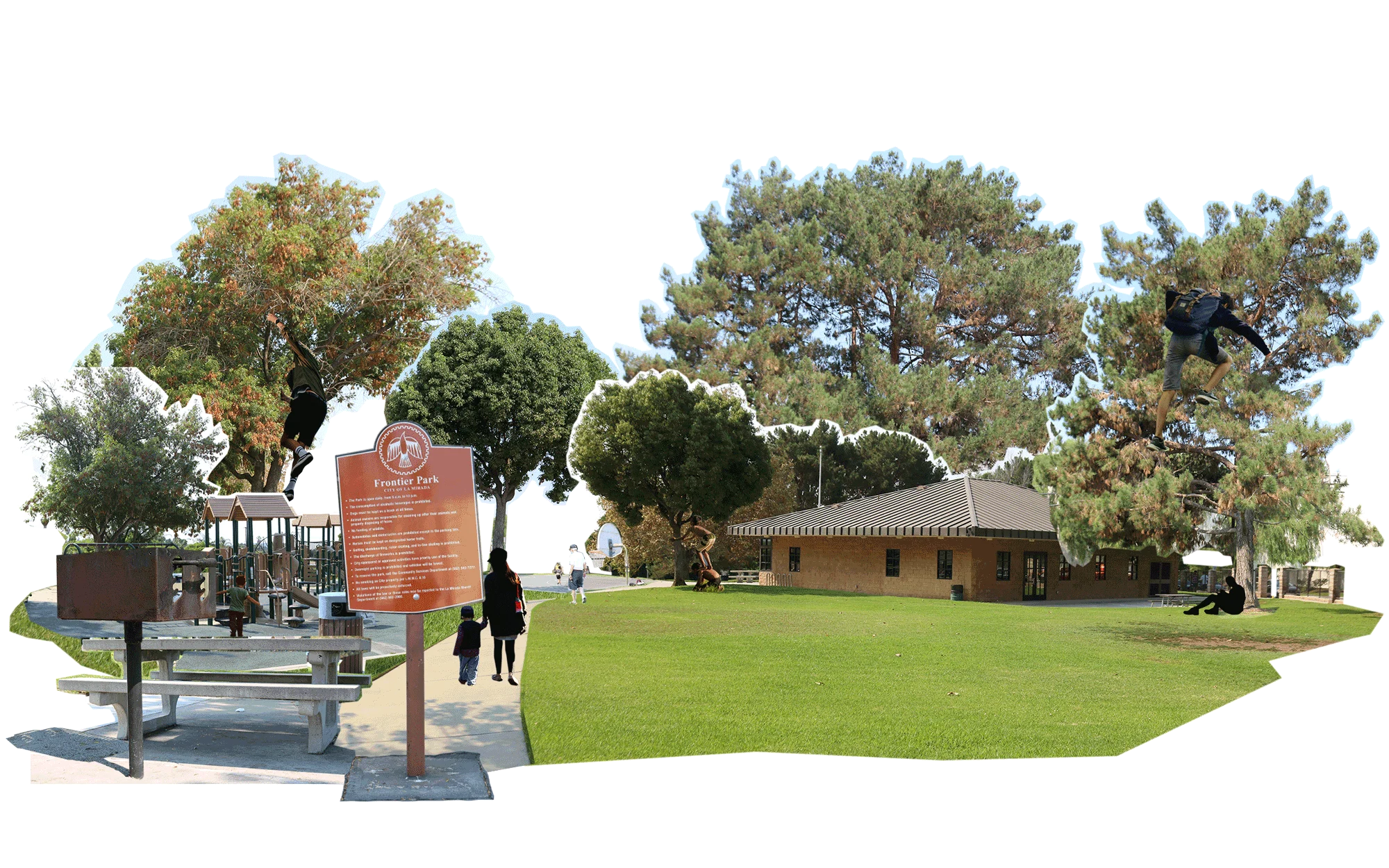
Frontier Park (La Mirada)
“Frontier Park is this little regular park in the neighborhood by my mom’s house in La Mirada where I grew up. It just has all kinds of memories for me, with my mom taking me there and me hanging out there when I was a little older. After graduating from high school, I worked for the City of La Mirada at that park as a “Counselor” for an after school program. For me, this park is a reflection of all the parks in the region. This park was part of my daily life in La Mirada because there is nothing to do there; it’s a suburb. There are no music venues, so I would climb trees at this park, be a hippy kid, and write a bunch of songs. I still do that. I like to climb trees!” – Bardo Martinez
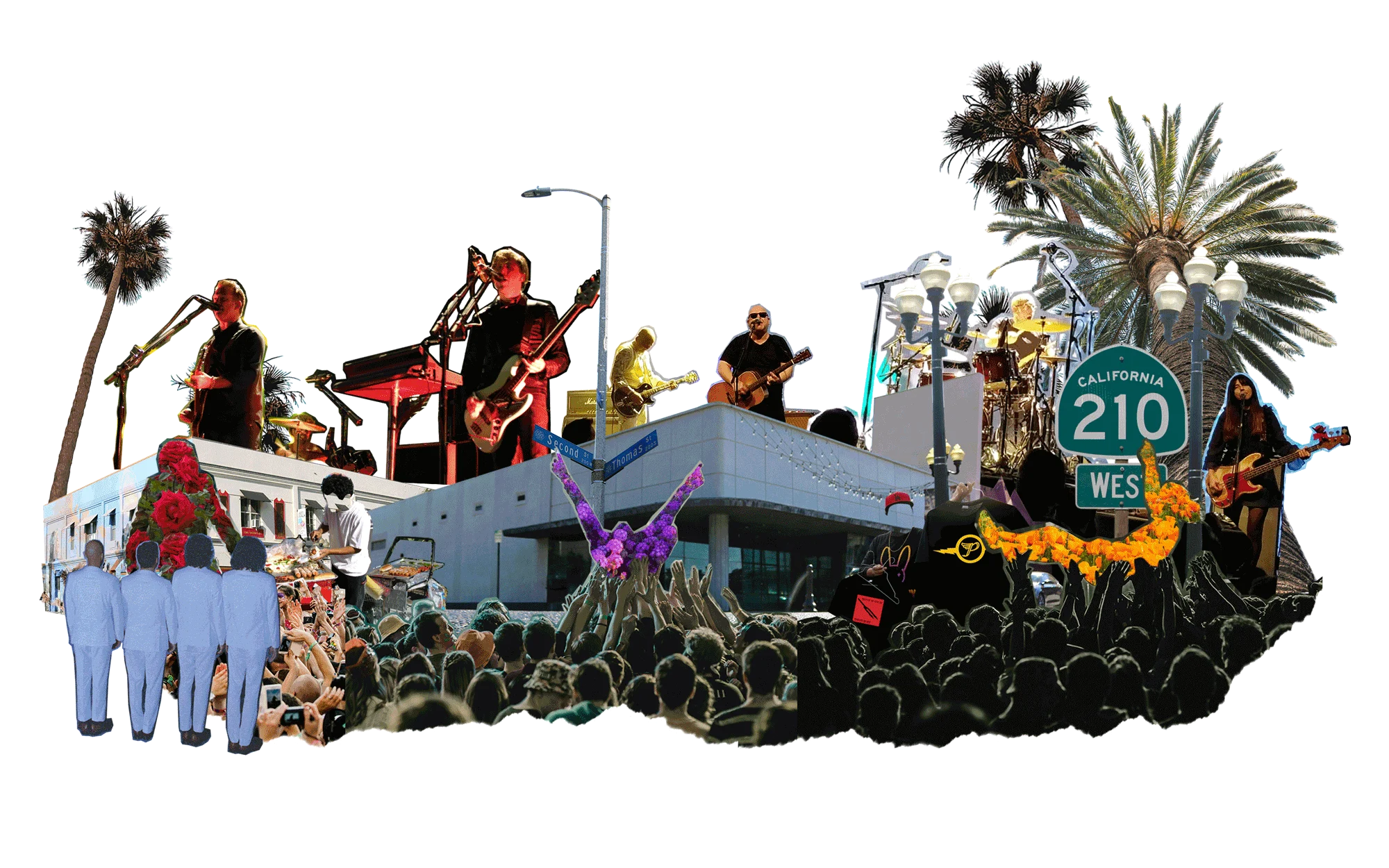
The Glass House (Pomona)
“This venue has sentimental value to me. I grew up in Rialto, California, 60 miles east of downtown LA It was the closest place I can go see legit bands play from where I lived. Nobody would come to Riverside or San Bernardino and there weren’t any hip clubs that would bring cutting edge music to Rialto. When I was a teenager, this was the place to go. I saw Queens of the Stone Age play here when Songs for the Deaf came out. I saw The Pixies here when they had a secret comeback show before they reunited in Coachella in 2003. I saw so many bands as they were cutting their teeth and thankfully, it was so off the beaten path for music heads in LA that it wasn’t that tough to get tickets for these shows. I also loved that it was for all-ages. It meant a lot to me when we started to get asked to play here because I remember being a kid and thinking man, if I can play a show here...I made it. That still holds true. We’ve played it and have sold it out several times.” – Carlos Arévalo

Espacio 1839 (Boyle Heights)
“When I first moved to LA six years ago, I would hear about this space that was really good at representing the art scene of the immediate community. They had great books that were political-minded; I appreciated that. I also met our future tour manager, David Gomez. He used to help run the non-profit there. He also sold music there, so I would buy rare records for good prices. He’s a DJ and wouldn’t charge these Hollywood or gentrified prices like elsewhere. He ended up buying our vinyl on consignment. He also worked at Amoeba Records, so because of his network, we were able to have our stuff in those stores even though we weren’t a signed band. I thank him for spreading our music because we were still underground. He also created income for us as a band, which was a first at the time.” – Carlos Arévalo
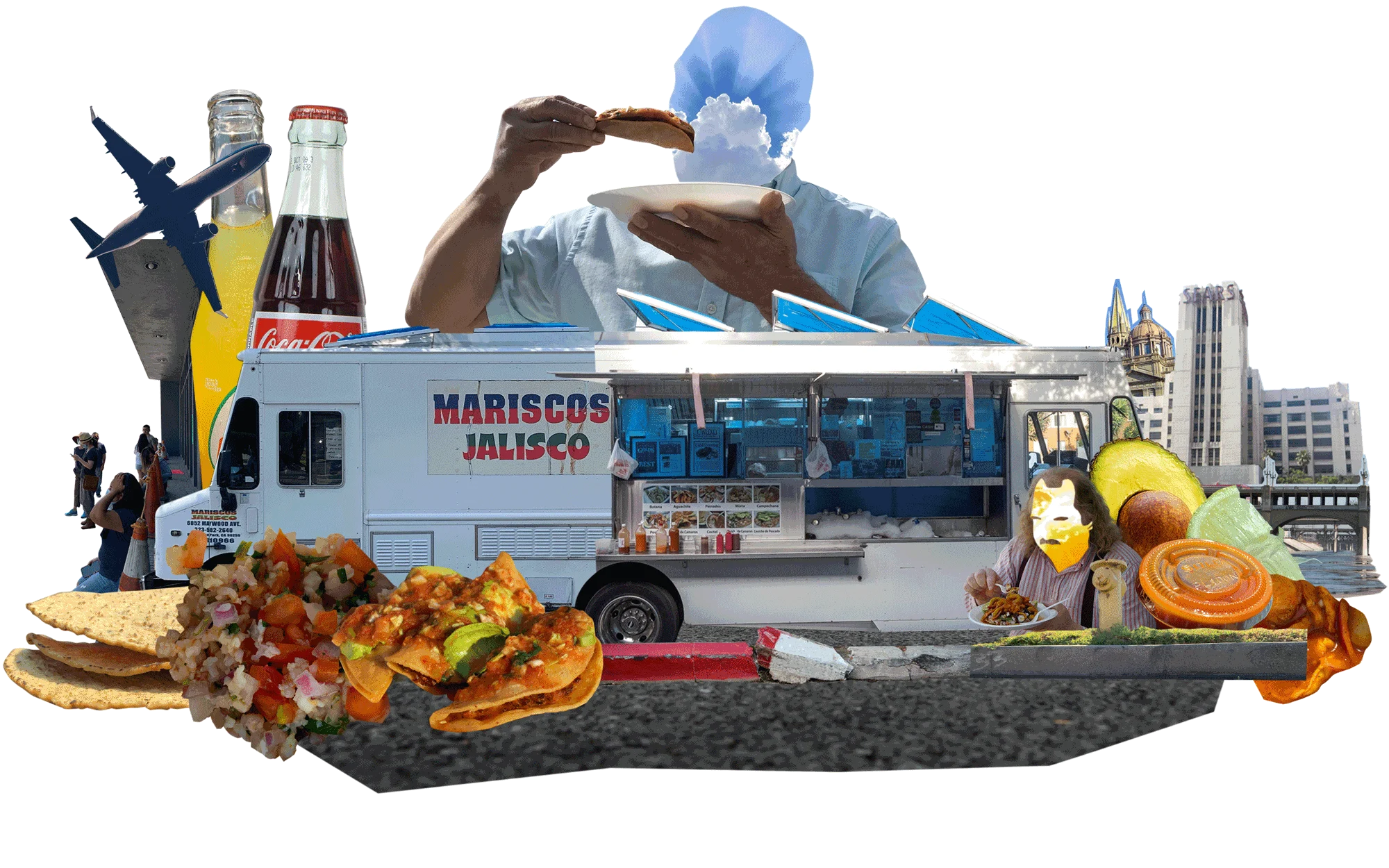
Mariscos Jalisco (Boyle Heights)
“Mariscos Jalisco is part of Chicano Batman’s history. We always get those tacos de camarón. We eat tacos, ceviche, and Carlos always gets the aguachile and I hate him for it. He makes us eat it and it’s so spicy.” – Eduardo Arenas
“The aguachile is so fucking spicy so I order one for the table. The idea is for us to pick off pieces and add them to our tacos de camarón. I did eat one whole tostada one time and I almost died. I had the worst stomach ache of my life that day. Our Producer Leon Michaels goes directly to Mariscos Jalisco straight from LAX when he flies in from New York with his family. He can eat one of those tostadas de aguachile by himself. I don’t know how he does it.” – Carlos Arévalo
Carlos always gets the aguachile and I hate him for it. He makes us eat it and it’s so spicy.

Future Music
This music shop in Highland Park is also part of the band’s history. I don’t go anywhere else to get my guitar set up. The guitar tech Jason is a genius. I’ve tried so many guitar techs and they’re all great, but something makes Jason a cut above the rest. We come here to repair amplifiers and keyboards. If they can’t repair it, they know who to take it to get it done right.” – Bardo
“The first time I came here I went with my five pedals. I told them, ‘I want to exchange these pedals and I need a new sound.’ They told me, “you can probably get more money if you sold them individually.” I told them, it doesn’t matter and they gave me a new sound.” – Eduardo Arenas

Honorable Mention
“This band is such a regional experience and literally we would not have met if it wasn’t for the freeways of Los Angeles County. We’re all connected by them,” says Bardo. If the band had to choose one freeway, it would be the 210 because it connects all the band members to their homes around Southern California and to their practice spaces.

